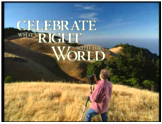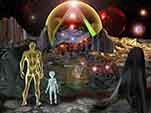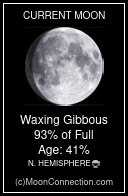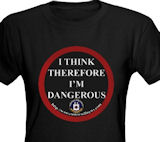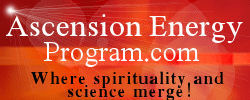http://www.science-spirit.org/articles/articledetail.cfm?article_id=11
"Patterns of The Real: Quantum Nonlocality"
By Kevin Sharpe and Jon Walgate
The counter-intuitive truths of quantum physics have justified religion’s long-fought resistance to the bleak, deterministic worldview of classical science. But what now? Kevin Sharpe and Jon Walgate explore the brave new world of nonlocal reality, and its implications for religious understanding.
Local Knowledge
We all know physics. Developmental psychologists describe evidence that children are born with an understanding of their world "hardwired" into their brains: they anticipate the basics of grammar, they already know basic human emotions, and have an appreciation of simple biology. Thus we hold an intuitive knowledge of physics.
Psychologist Elizabeth Spelke shows that very young children understand about solidity, inertia, and gravity. Steven Mithen, in his book The Prehistory of the Mind, writes that:
While the life experiences of a young child are dominated by that of people, they nevertheless understand that objects have fundamentally different properties. They cannot, for instance, cause "action at a distance," as a stranger can do when he or she enters a room.
Do we really think like this naturally? Civilization has bloomed within the past 10,000 years and allowed no time for evolution to adjust us from the mindset of the hunter-gatherer. What characterizes hunter-gatherer thinking? Peering through the fog of accumulated cultural ideas and philosophies, anthropologist Tim Ingold sums it up:
For them, there are not two worlds of persons (society) and things (nature), but just one world — one environment — saturated with personal powers and embracing both human beings, the animals and plants on which they depend, and the landscape in which they live and move.
A fundamental conflict rages here. On the one hand, something programs us to think that inanimate objects don’t affect one another at a distance. On the other, we sense a unity to reality — a connection between all things.
This psychological contradiction mirrors the issues dividing science and spiritual traditions. On one side lies a Newtonian picture where objects are sufficient for their own existence and determine their own fates in their own surroundings, regardless of the rest of the universe. On the other side lies a spiritual picture, where a cohesive, existential force connects all things and breathes fire into the particle play.
The Death of Locality
This conflict flared anew in science only 70 years ago. "Local realism," as physicists call the Newtonian standpoint, had established itself as the paradigm of science centuries earlier. Physicists naturally thought that, if you wanted to study the behavior of an object, you need only consider the conditions where you find it: the gravitational and electromagnetic fields in the laboratory, for example. Local realism says it makes no difference what objects elsewhere are doing — weather conditions on Mars exert no effect. How could scientists know the causes of their measurements if events on Mars could affect laboratory experiments? The whole universe would blur chaotically, with individual objects indistinguishable from the whole. Locality is necessary before we can do any science.
The slowest revolutions are sometimes the most momentous. It turns out that local realism is wrong. Quantum mechanics, framed in the 1920s, is unavoidably nonlocal — particle behavior can correlate across vast distances. But not until 1964 did a proof emerge for what lay implicit in the mathematics for thirty years. John Bell devised an experiment to measure nonlocal correlations and so forced a choice between local realism and quantum mechanics. Another 18 years passed before someone performed the test successfully. In 1982, Alain Aspect demonstrated in the laboratory what everyone had begun to suspect. The grip of local physics ended.
Some of the world’s best physicists, including Einstein, protested. Quantum mechanics ran counter to their intuitions — those same intuitions Spelke discovered in the child in us all. So there must have been some mistake; quantum physicists must have overlooked something. They hadn’t, as Bell and Aspect showed. Einstein — and our intuitions — are wrong.
Yet, despite the ubiquity of nonlocal connections, our world brims with structure and order. Nonlocality is not a generalized assurance that "everything is interconnected." It is a very precise theory about interconnectedness, and allows for the organization that local realists thought nonlocality would undermine.
The Physics of Nonlocality
Imagine a pair of subatomic particles (electrons, for example) bound together in a state with zero "spin" (rotational momentum). These particles, as it happens, can’t possess zero spin themselves; they must spin either "up" or "down." It follows, because of the zero spin of their bound state, that the particles must individually possess different spin states — one must be "up," the other "down."
We release our bound particles, and they shoot away from one another near the speed of light. They lie 600,000 kilometers apart within a second. If we measure the spin of one, we will instantly, across that vast distance, know the spin of its partner.
Bell compares the correlations found between our particles when we measure their spins in different locations, and shows they must communicate on some level. The separated particles not only know that they’re opposites. They know about the measurements we perform on their distant partners. Physicist Henry Stapp calls this "the greatest discovery of all science."
The story continues, for this entanglement is contagious. Quantum teleportation experiments by Anton Zeilinger and others show that particles can exchange their quantum states with others. Artur Ekert, of the Clarendon Laboratory, Oxford, recently entangled two unrelated photons via an intermediate photon pair. Further, no limit exists on the number of particles that can become entangled. Noah Linden and Sandu Popescu at Cambridge have studied larger groups; most of the connections they discovered are nonlocal. "Quantum theory isn’t just a tiny bit nonlocal," says New Scientist. "It’s overwhelmingly nonlocal. Nonlocality is the rule for our universe."
